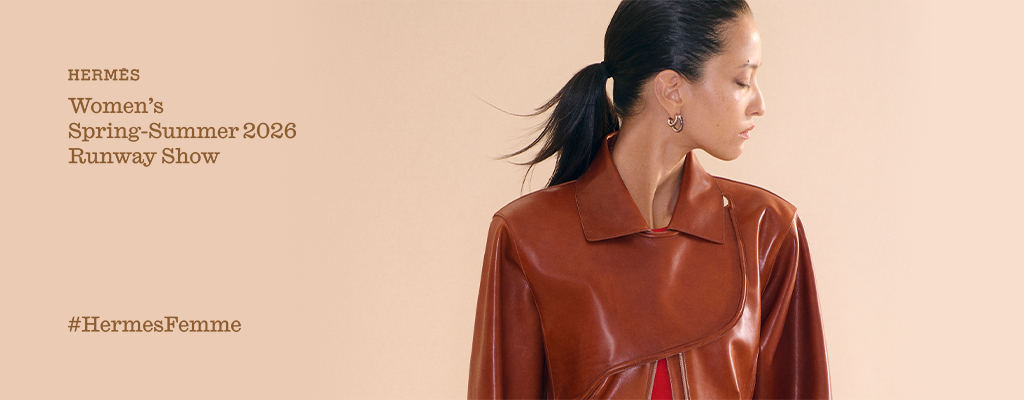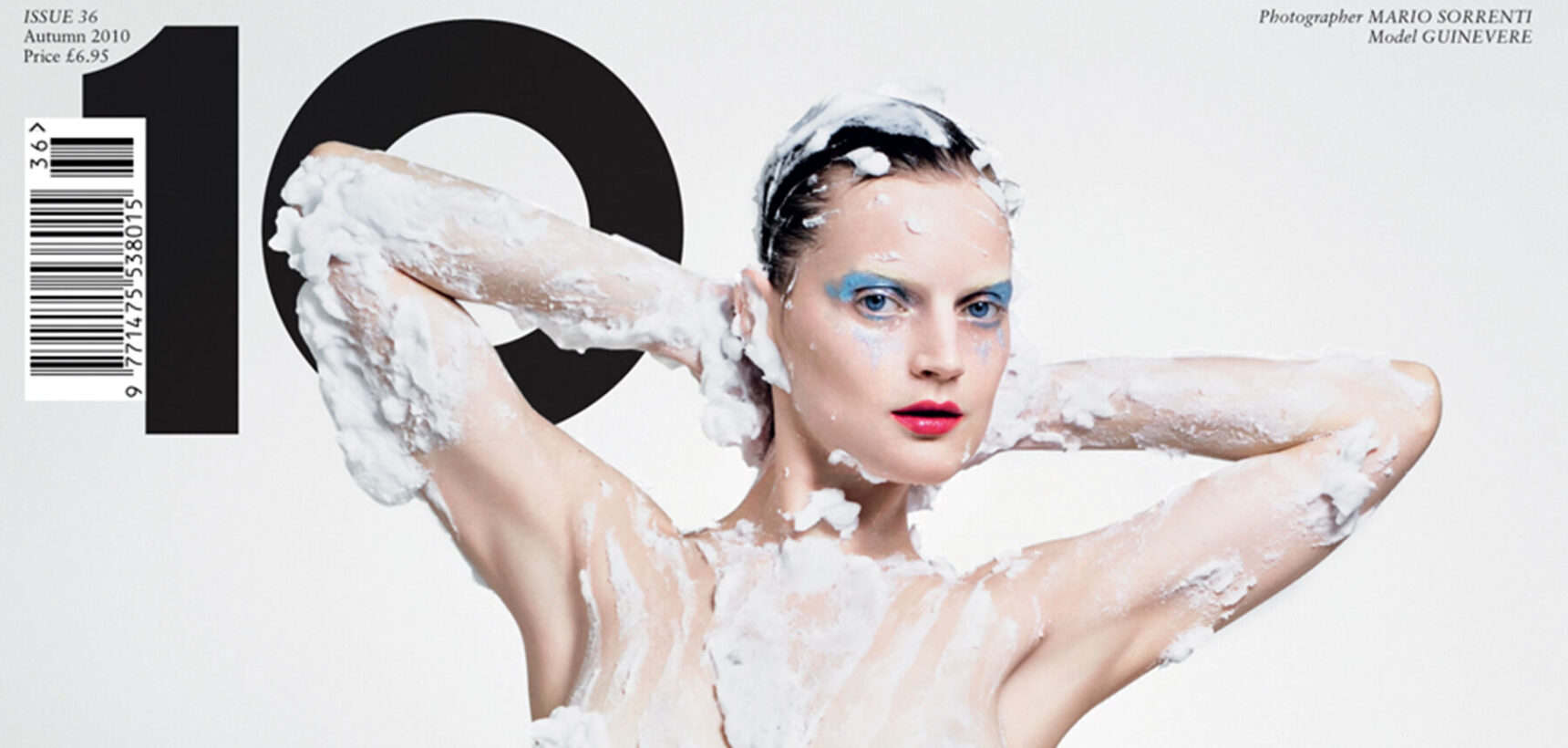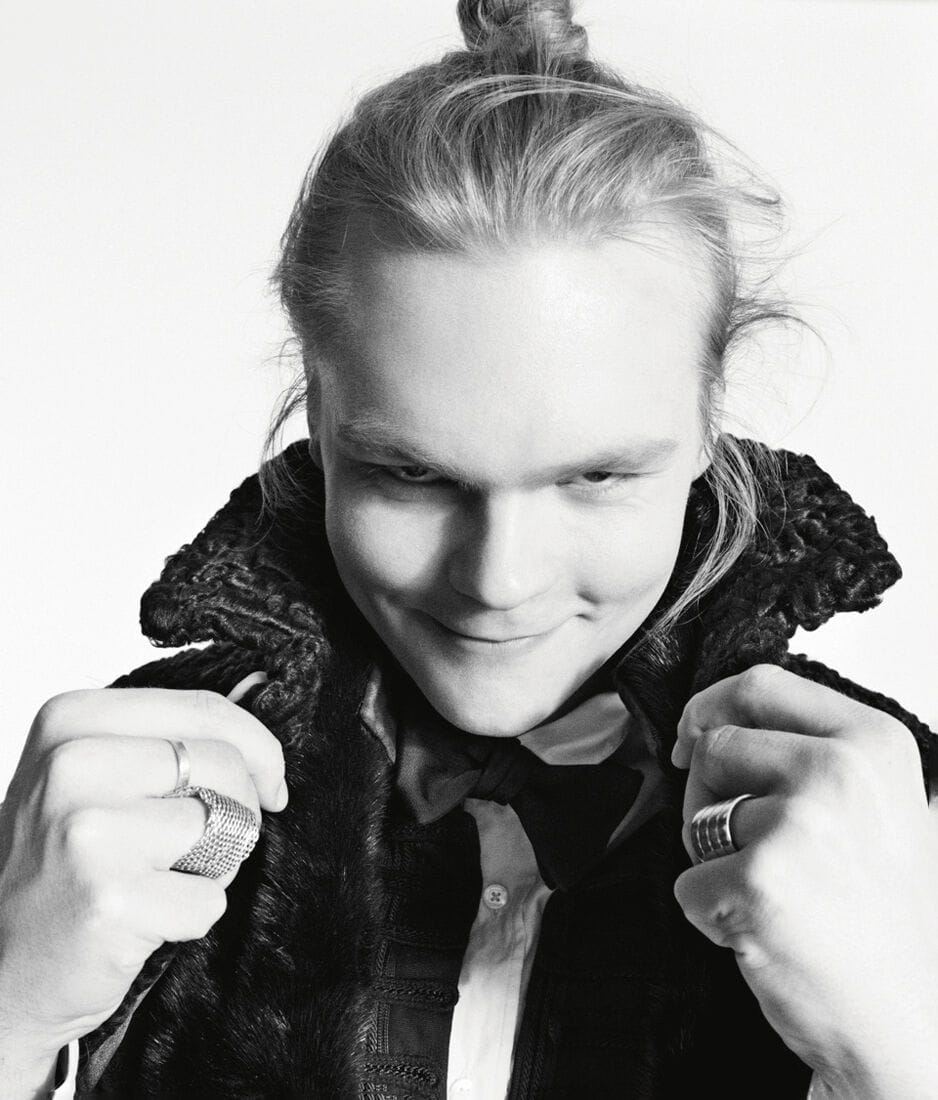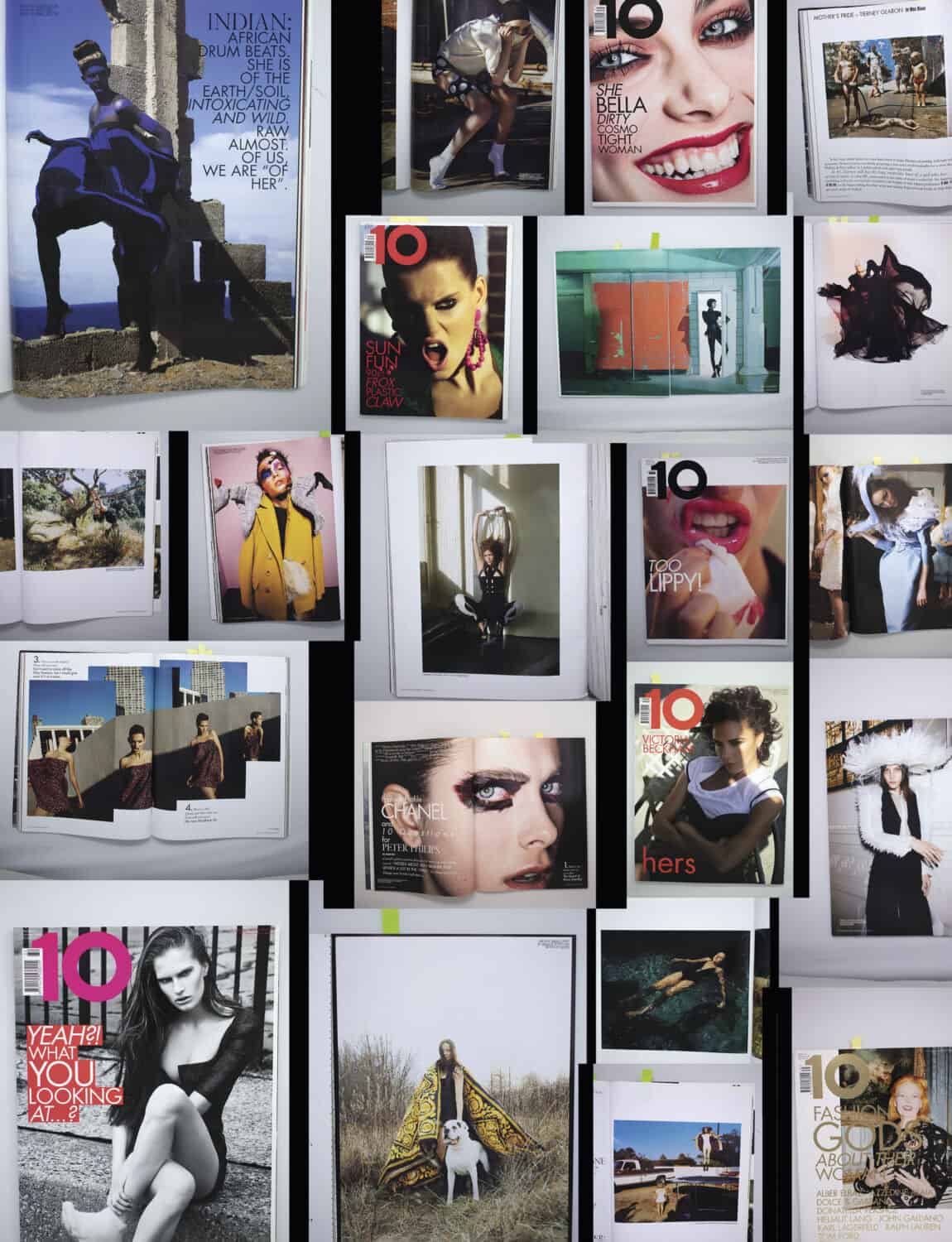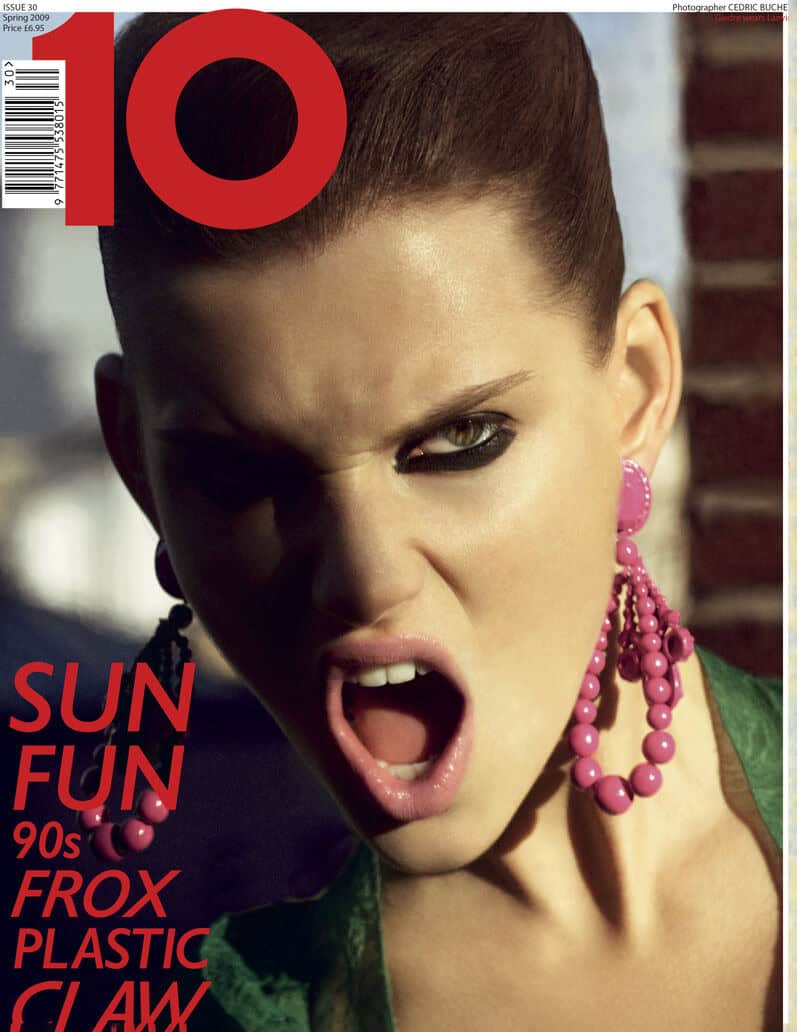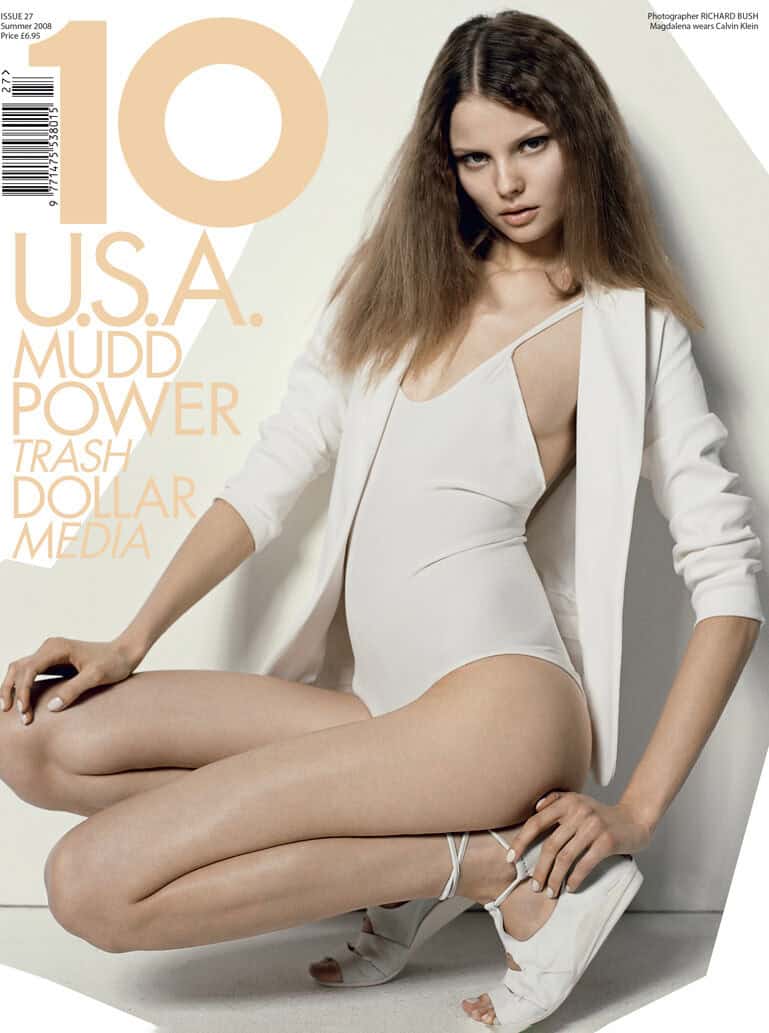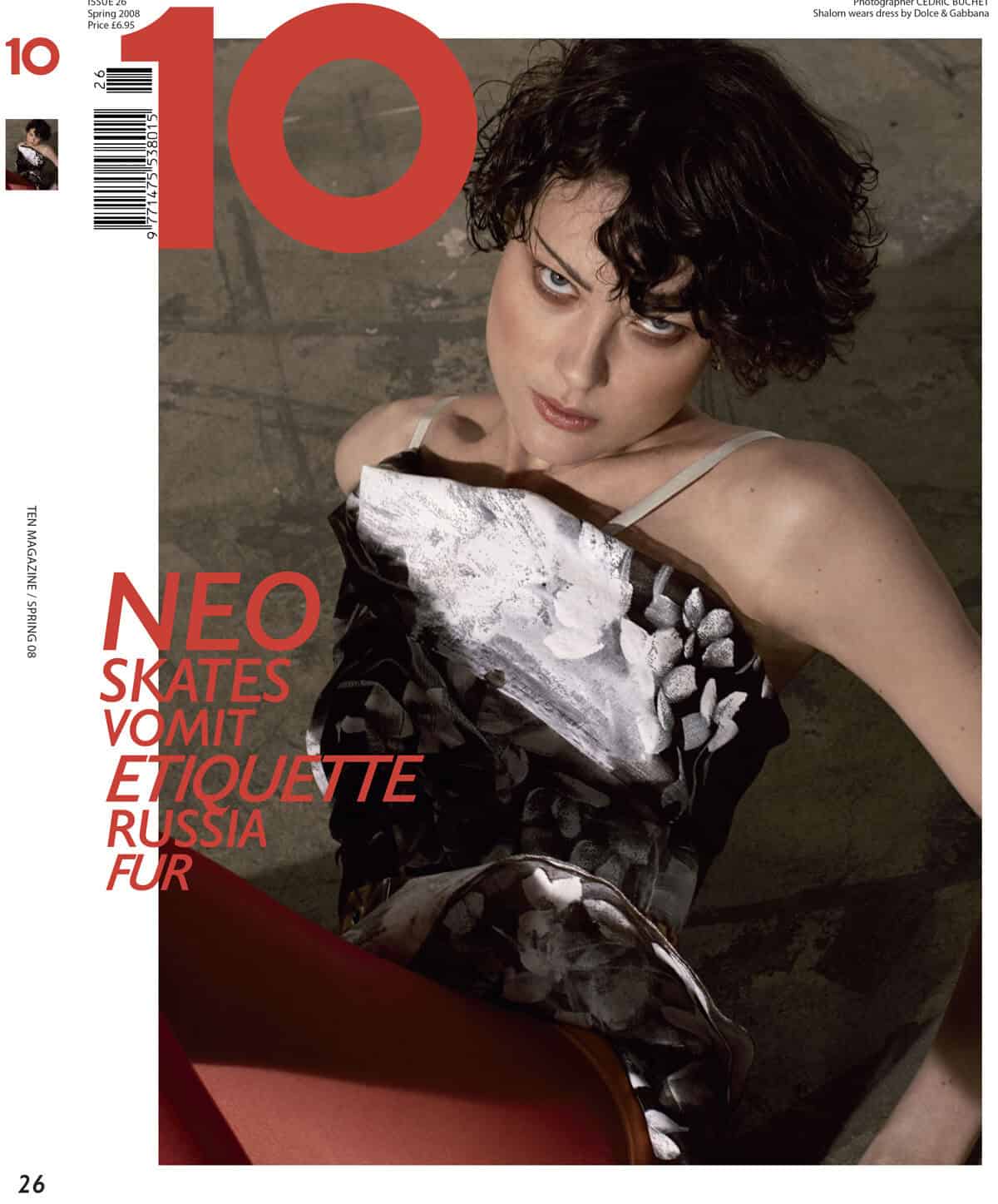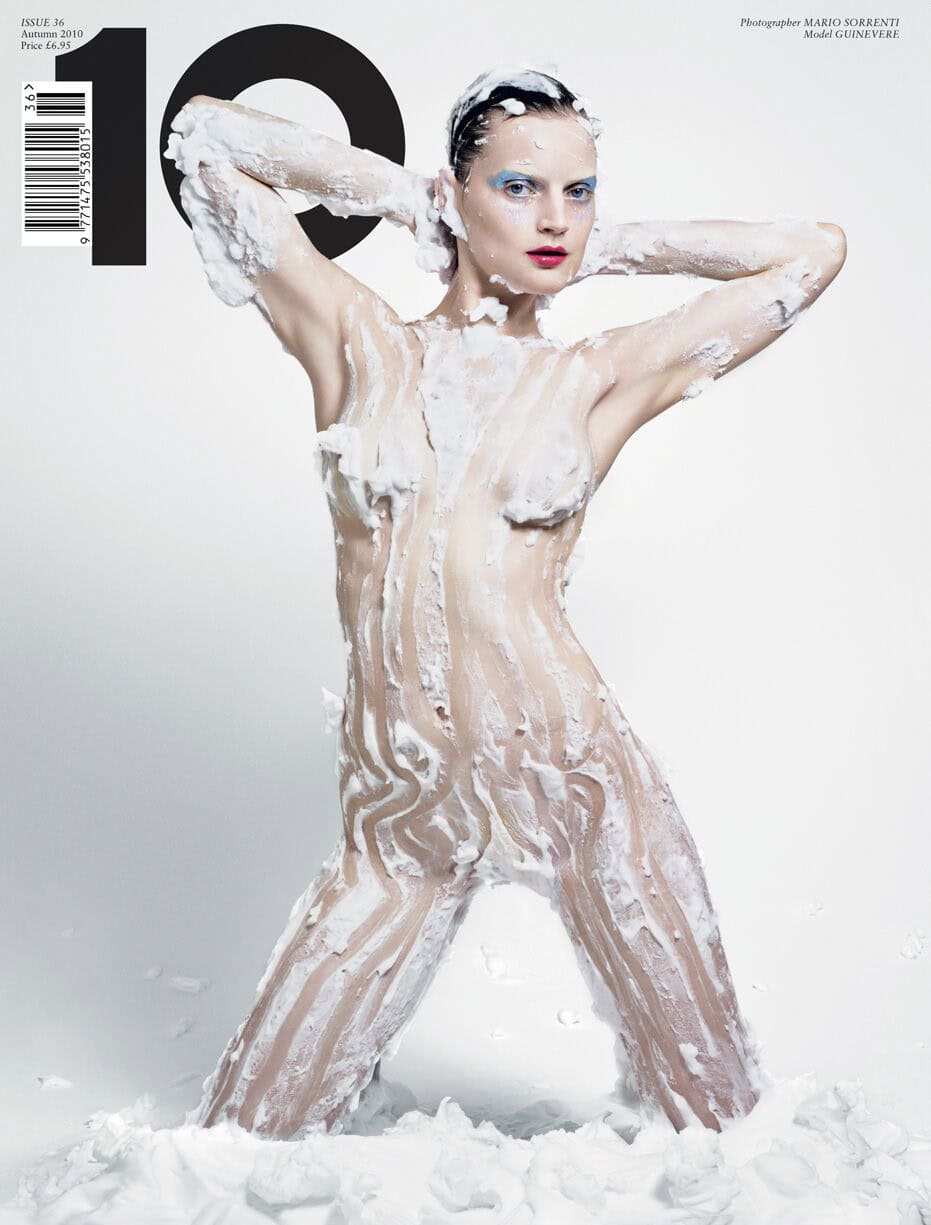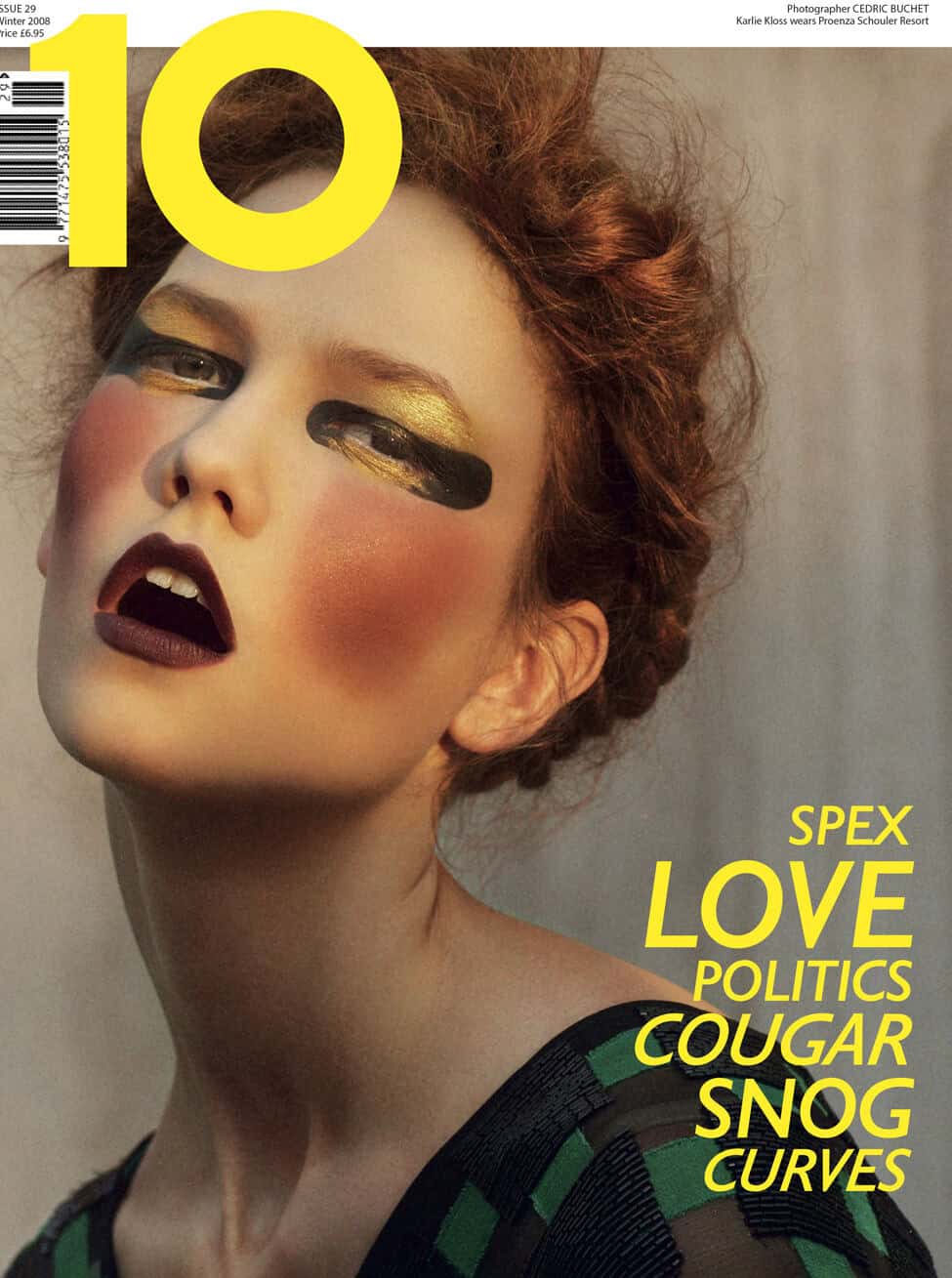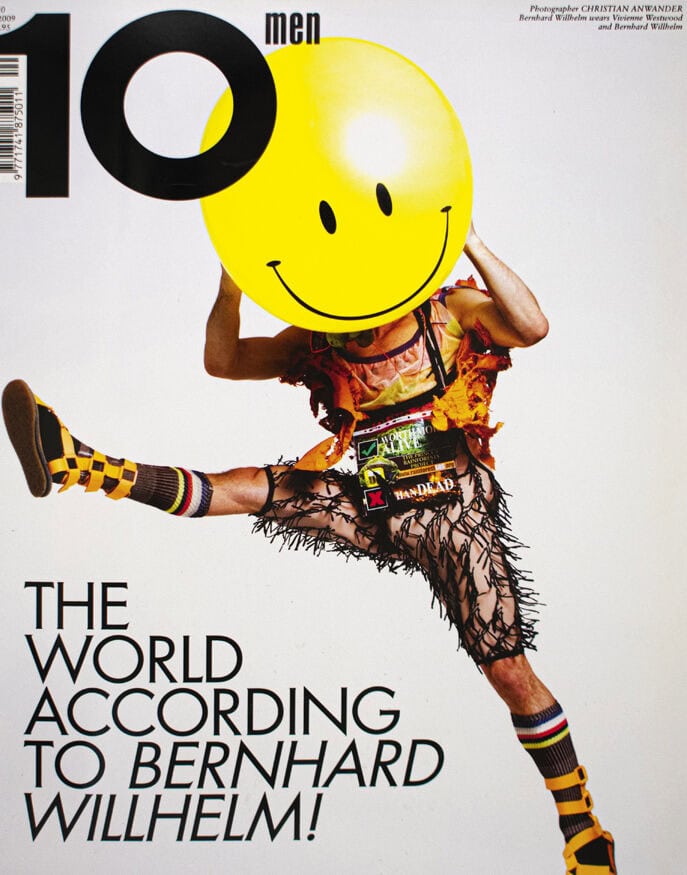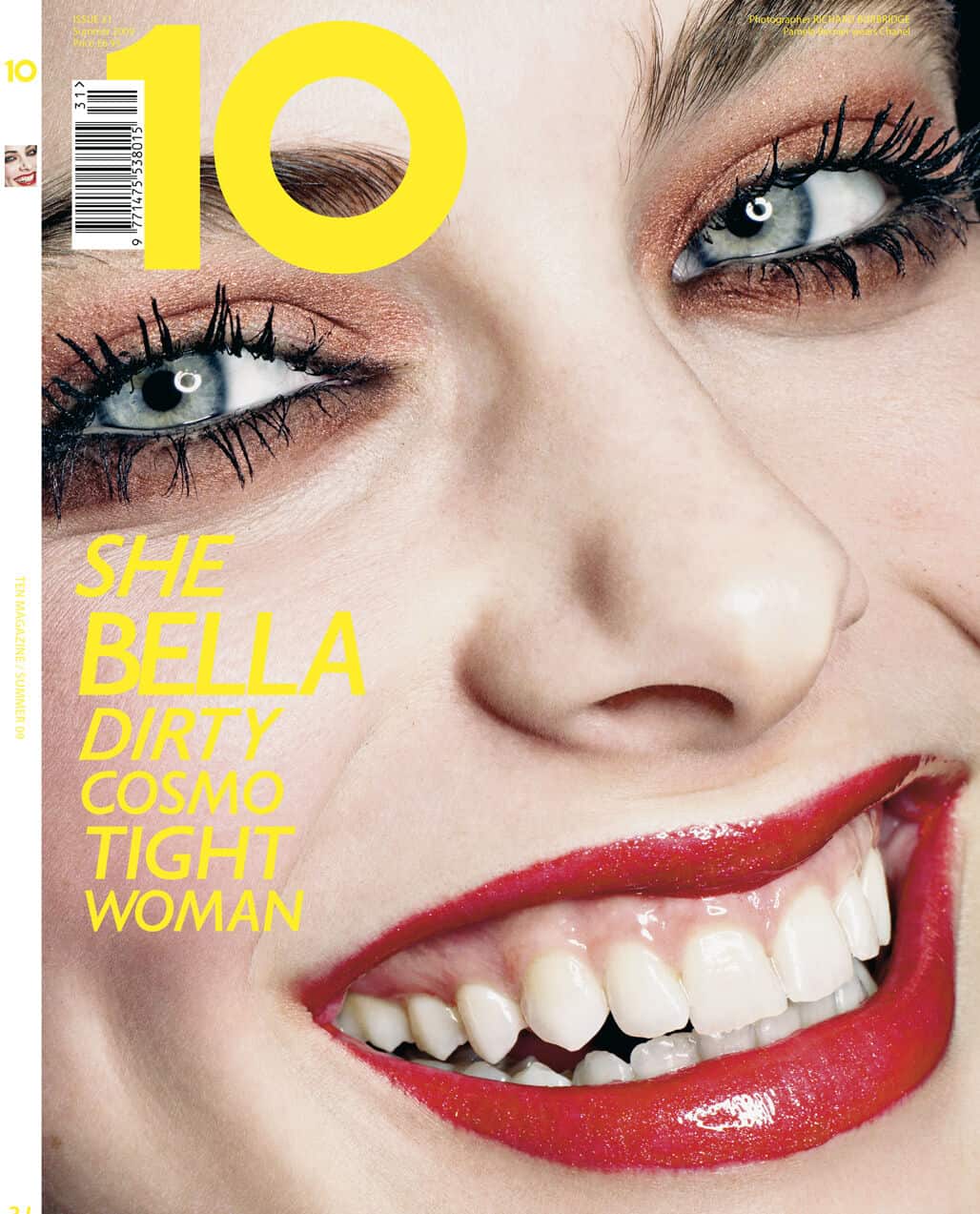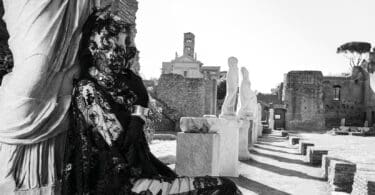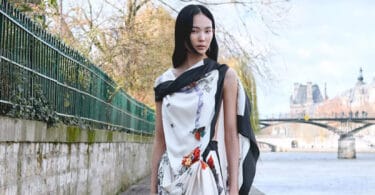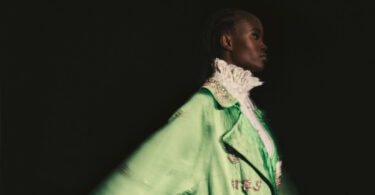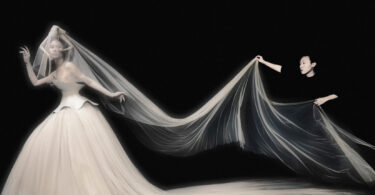I wrote my dissertation on 10 and 10 Men. I didn’t know Sophia at the time, and my biggest achievement in the industry was blagging my way into shows at London Fashion Week. My time at the London College of Fashion wasn’t the experience I’d expected it to be. Moving to the magical capital from provincial Denmark, I dreamed of haute couture and avant-garde fashion moments à la André Leon Talley.
Anders in his student days, photographed by Chris Craymer and styled fry Toby Grimditch, who is note editor-in-chief of 10 Deutsch
At LCF, I found a somewhat pragmatic atmosphere that didn’t satiate my thirst for glamour. After school, my escapism came in the form of 10. It was the late 2000s and Sophia was on a roll, commissioning the kind of writing that made aspiring fashion kids like me feel like flies on the wall of an impenetrable industry. 10 took you through its golden gates with all the self-gratifying, self. effacing self-irony you could dream of, shaping a tone that had never previously existed in fashion publishing. Thanks to my cultural studies tutor Anna König – who must have recognised my hankering for the career 10 represented – I was granted permission to base my dissertation on this prime piece of publishing. Getting to intellectualise a title so unapologetically fashion meant everything to me. Before I ever met Sophia, her magazine had already saved me from fashion fatigue, let me into this dream world and shown me where I belonged. So, because you’ve all been asking, as they say on Instagram, here’s that excerpt from my 2009 dissertation that you’ve been dying to read.
10 Magazine covers from 2008-2009
Living 10: Fashion writer as friend, expert and authority
10 often uses a sarcastic tone that mocks the style of advertising common in women’s magazines, which must be viewed as a joke on the part of 10, as the method sells the product for this reason. 10 does, nonctheless, use the style of advertising in another more serious way, which is less obvious to the reader, and whose effect therefore resembles that of women’s magazines use of imperatives to a greater extent. An example is Hadley Freeman‘s advisory bullet-points for fashion interns:
*4. Don’t be stupid. And by this I mean don’t think you can nick anything and get away with it, don’t expect frenchies, keep records of everything you send back and to where and don’t show off with clever filing systems – I can guarantee no fashion editor will understand any filing system that consists of anything more than URGENT and NOT URGENT. Fashion editors are busy (generally) and are also a little bit stupid (arguably).” (Freeman, 10 Men, Autumn/Winter 2007: 79)
While the feature is presumably written for Freeman’s peers as a story to which all fashion editors can nod in recognition, and not aimed directly at interns, it must be assumed that Freeman keeps the pretend target reader in mind. Knowing that members of the industry, whose positions rank lower than Freeman’s in the fashion hierarchy, will read the feature, 10 becomes a lifestyle “mentor’ to the reader. Employing the style of expert discourse, Freeman’s authority becomes matter of course simply because her position in the fashion industry should be synonymous with wisdom. Nathaniel (2009), a fashion student, noted: “[The writers in IO) definitely have expertise. If it’s written in a way that I can relate to and it’s entertaining, then yes, I would probably take their advice.” Hence, this different way of using the style of advertising signifies a new direction in the fashion writer-reader relationship. Here, the fashion writer can shamelessly dictate how the reader should conduct all aspects of his or her lifestyle, not because the writer is an actual expert, but because the writer is the ‘notorious’ Hadley Freeman.
In a media world of clever reader manipulation, the powerful combination of the style of expert discourse and the style of advertising “with traditional magazine feature-writing style (the traditional socially ‘appropriate’ style for magazines)” (Machin and van Lecuwen 2005: 588) plays on the reader’s confidence in the writer’s expertise and authority.
As for 10, it further plays on an expectation that the reader – a fashion follower – idolises the writer. and that this worship permits dictation. Here lies a presumption in fashion writing that the reader will not question the accuracy or truth of given statements, as opposed to “normal’ journalism, which is expected to substantiate any ‘advice’ or instruction given to the reader in accordance with traditional journalistic principles and ethics. Taking this idea to the next level, 10 often admits to journalistic indolence, for instance in one of Freeman’s menswear reports from Milan:
“Now, then. Faithful readers of 10+ have learned to expect nothing less from me than eagle-eyed, nigh-on-scientific fashion analysis, with absolutely no self-indulgent narcissism, pointless blathering or banging on about boys who I fancy who will never, ever, not-even-if-hell-freezes-over fancy me back (and I must clarify, this is not through any physical fault on my side – I am perfect – but simply because they are ho-mo-sex-u-als). However, I think I have earned my right for a bit of grandstanding so I warn you, this report is going to have a LOT of non-fashion griping. Why? Because, thanks to Valentino, I am reporting to you from Milan when 1 should be at Glastonbury.” (Freeman, 10 Men, Spring/Summer 2008: 144)
It is important to note the current of self-irony and dry humour which consistently runs through 10, However, despite the obvious self-irony, Freeman’s quote testifies to the nonchalant attitude and lack of respect towards her own craft, and applauds this view all the same. By stating her indifference so bluntly, Freeman once again reminds the reader of her status, for the very honesty in her quote can only exist for the reason that Freeman regards her own importance so highly that there is room for this kind of self-ironical honesty. The fashion writer is more important than the story itself. Her status supersedes her craft – journalism – and as a result, she has the power to be as indolent with her work as she pleases, because she believes the reader must accept it.
10 Magazine covers from 2008-2009
The best reason for this somewhat peculiar understanding between fashion writer and reader is, in fact, the conversational style (Machin and van Leeuwen 2005). Drawing on the concept of “dialogue between equals” (ibid: 596), the conversational style establishes an informal, friendly and almost friend-like ‘relationship’ between writer and reader through the use of both street-style vocabulary and direct address of the reader (Machin and van Leeuwen 2005), which also links to the style of advertising. By writing in first person, using expressions such as ‘you know’ or ‘dear reader’ which purposely degrades the quality of the writing to a ‘lower’, more colloquial level, often directly humorous, the writer arguably creates a welcoming atmosphere, which mimics that of conversation between friends. It can further be argued that the reader, as a result, warms to the writer on a personal level, which establishes a sense of trust in the writer’s authority. While the friendly tone in 10 can be said to only exist on the condition that the reader accepts the status and authority of the writers, 10% friendliness is unique in that it is highly personal on the side of the writers and generally written with the aim of amusing the reader. This results in almost autobiographical writing, which reveals detailed experiences from the lives of the writers. In the feature ‘Me and My Rather Large Calves’, Richard Gray writes:
“Here’s an accurate description of my calves for your amusement – well, every bugger else is laughing at ’em! Imagine saddlebags: big, leather saddlebags hung either side of a horse. Got it? OK, take imagined saddlebags and add a dozen cans of Tesco Value beans to each. They’re bulging, aren’t they? See them, the leather’s really stretched now. And they’re heavy, right? Heavier than Fern Britton, wet through, stood under a shower, after a Sunday roast.” (Gray, 10 Men, Spring/Summer 2008: 140)
The combination of the voyeur-like personal flavour of the feature, Gray’s highly visual description, direct address and questions posed has a distinctly embracing effect on the reader. Gray creates a one-way dialogue and pulls the reader in, which results in a familiar portrayal of the writer. In doing so and revealing intimate self-critical feelings, he lets the reader believe that the two are establishing a personal relationship. Gray’s use of street style, humour and pop culture references further create a sense of comfort for the reader, who is put at case by the writer’s unassuming normality. In our interview, Blair (2009), a features editor, noted in regard to Hadley Freeman: “She pretends to be all geeky but in fact she absolutely loves herself and does a poor but very funny job at concealing (this and the fact that she) thinks she’s too good to work in fashion.” It is an eerie deception of the reader, conjured up by an industry of people who are hardly known for being unassuming. Ict alone welcoming towards outsiders. König (2006: 4) identifies “insider aspects” in fashion writing, which can be linked to the “relationship” established by the writer with the reader, one that welcomes the reader into the coveted fashion world to which the fashion writer belongs.
10 Magazine covers from 2008-2009
“I’m sooo desperate for a ‘Pat Cash’ (slash) on our way to premier show du jour, Number Nine (prairie/goth-type clobber.) Bladder relief comes in the form of Colin McDowell, our resident car guest and best chum. Colin insists we all sit down and have a snack in that beautiful café o’er yonder’, which he says in that silver-tongued and possibly invented accent of his. We just, just make Sonia Rykiel (nice fox fur collars and plenty of eyeliner). Antony blames Colin for being late, Colin blames the beautiful café and we all have to stand.” (Gray, 10 Men, Summer! Autumn Preview 2007: 189)
Gray’s depiction of his interaction with Colin McDowell – a big fashion profile – gives the reader a false feeling of familiarity with them both and a sense of belonging to the fashion industry for knowing this anecdote. Consequently, if you read 10, you are in fashion. As a result, the reader is presented with an image of fashion as a “desirable, though inaccessible realm, marshalled, no doubt by the fictitious ‘fashion police'” (König 2006: 8) and is taken one step closer to a feeling of being a member of this world, resulting in an arguable willingness on the part of the reader to take advice from the fashion writer, who is already a member. As Barthes (1990: 14) states, “Fashion is nor without its price: those who exclude themselves from it suffer a sanction: the stigma of being unfashionable.” With its conversational style, fashion writing strives to provide ‘a flavour of equality to forms of communication which are in fact deeply unequal’ (Machin and van Leeuwen 2005: 595), and succeeds in doing so.
Conclusion
The written content of 10 Magazine and 10 Men demonstrates that fashion writing is an inventive expression, which can be redefined by the discourses of the view of fashion writers of their professional value as ‘high’ or “low’. Fashion writing in 10 encompasses a business-to-business element, drawing on and addressing the fashion industry with the purpose of glamorising it to the reader, who views it as sensational. The modern fashion writer can take on the roles of expert, authority and indeed celebrity, using the gossip elements and the appeal of the coveted fashion industry to promote his or her position in the eyes of the reader. These discourses can be used to renegotiate the power balance between advertisers and publications. They define a magazine concept which is accomplished and highly fascinating.
Taken from 10 Magazine Issue 75 – BIRTHDAY, EVOLVE, TRANSFORMATION – out on newsstands now. Order your copy here.



